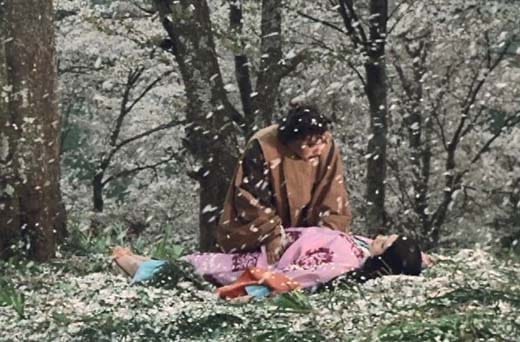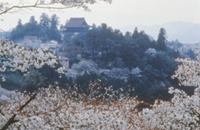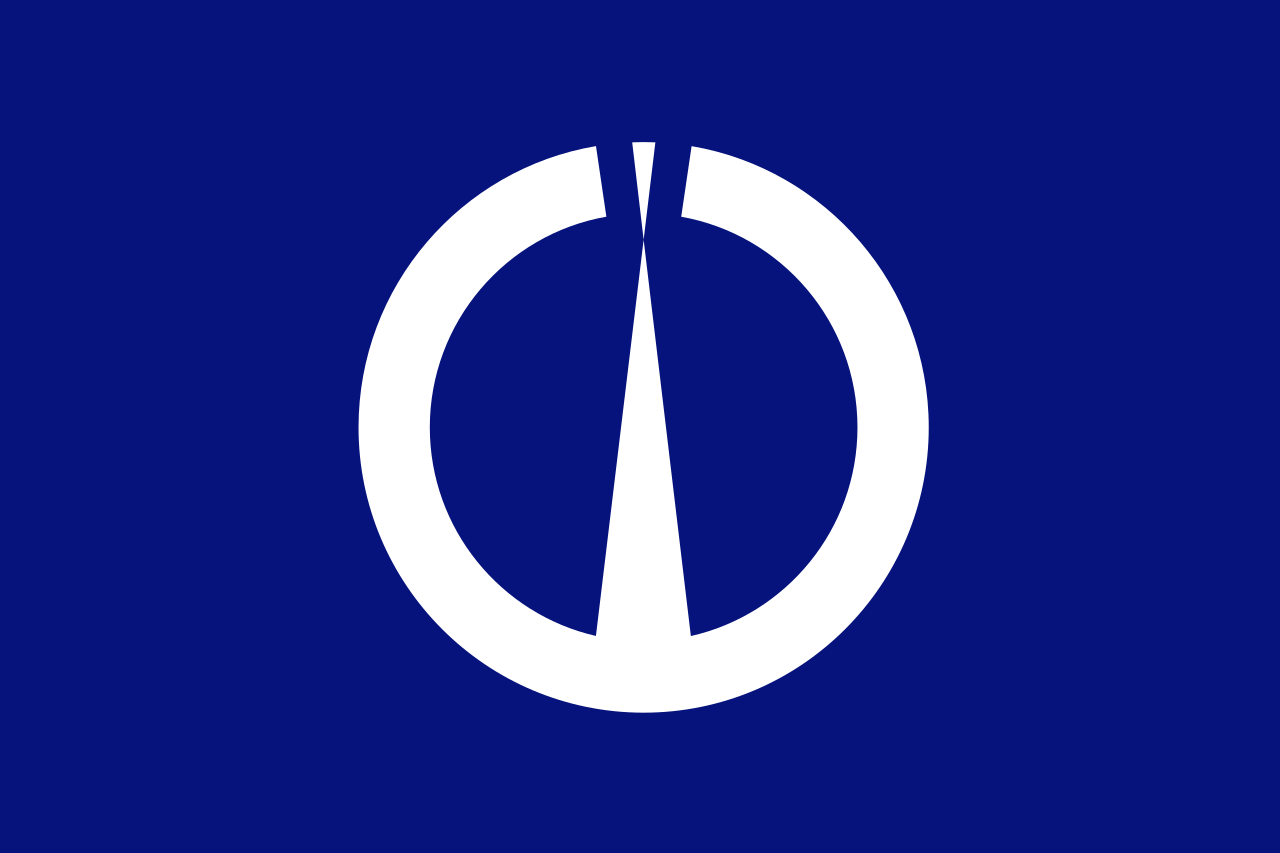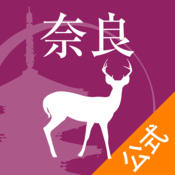A few thoughts on Shinoda Masahiro's Under the Blossoming Cherry Trees
A Japanese New Wave take on traditional horror-fantasy tropes.

I have a cold and it was rainy out, so for Victoria Day watched another Shinoda Masahiro film (I've so far seen Demon Pond and The Ballad of Orin), and man, it was a weird one.

Based on a short story written by Sakaguchi Ango (and since produced as a kabuki play), Under the Blossoming Cherry Trees is about a bandit living near the a mountain pass on the way to Miyako, or Kyoto some time in the Middle Ages, or more likely the Heian Period. He attempts to rob (or murder) a beautiful courtesan, but instead falls in love (the woman is played by the preternaturally beautifu Iwashita Shima, who remained married to Shinoda until his death recenty, in March 2025).

The woman than compels him to do horrible things. It's basically a horror movie disguised as a jidai-geki, and borrows from a lot of Japanese traditional horror-fantasy tropes and other movies. Rashomon – both the short story and the later Kurosawa film come to mind, thanks to the setting being moved to a derelict temple that gradually becomes overrun with corpses. But also film also echoes Kurosawa's Rashomon during the bandit's first encounter with the woman in the grove.
Ghostly noblewomen in ruined mansions also bring to mind Ugetsu, or the "Black Hair" segment in Kobayashi Masaki's Kwaidan a decade or so earlier. The horror of it all also recalls the truly ghastly Yotsuya Kaidan as well.
The film was shot in Yoshino in Nara Prefecture. Humorously, the Nara tourism board highlights this ghoulish film as "representing the essence of Nara."




